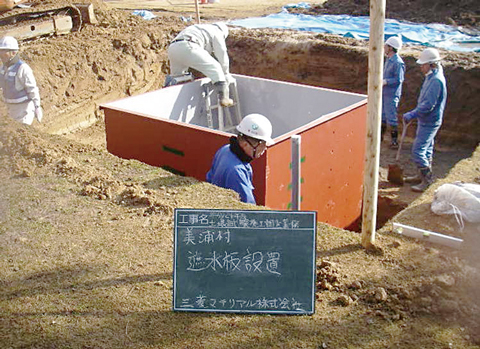Assessment of Exposure Doses and Decontamination
(2015)
QDoes radioactive Cs migrate from reused soils that have been stripped during decontamination?
AExperiments and analyses have shown that the migration rate of radioactive Cs was low in soils in Japan and that the range of migration was limited.
- Stripped contaminated soils were buried and covered with clean soil, and then sprinkled with 3200~3900 mm of water, which is equivalent to 8~10 years of natural infiltration. The concentration of radioactive Cs was in the range of 1000~3000 Bq/kg in the stripped contaminated soil and less than 40 Bq/kg in the cover and underlying soils.
- In the analysis of the water sampled using a soil-water-collection device that had been installed at the bottom of the underlying soil, no migration of radioactive Cs was observed.
- Simulation of the migration of radioactive Cs for 100 years using an advection–diffusion model showed that radioactive Cs migrated slightly and decayed within the contaminated soil (the maximum concentration at a distance of 10 cm from the contaminated soil will contain a 1% concentration of the contaminated soil).

Fig.1 Preparation at a site in Miho village
A trench with an area of 6 m × 6 m was dug and equipped with a 2 m × 2 m water-impermeable steel plate. Contaminated soil stripped from the surface was buried, as shown in the figure above, for the purposes of the migration experiments.

Fig.2 Three-layered investigation area separated by a water-impermeable steel plate
A soil-water-collection device was installed at the bottom of the underlying soil (50-cm-thick clean soil). Contaminated surface soil was buried at a depth of 100 cm and covered with 30-cm-thick clean soil. Soil cores were bored periodically in the area to investigate the vertical distribution of radioactive Cs.
